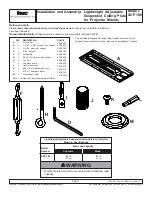
Order No. 2104 ..
4.2.4.4.2 Control algorithms and calculation of command values
Introduction
To facilitate convenient temperature control in living or business spaces a specific control
algorithm which controls the installed heating or cooling systems is required. Taking account of
the preset temperature setpoints and the actual room temperature, the controller thus
determines command values which trigger the heating or the cooling system. The control
system (control circuit) consists of a room temperature controller, a valve actuator or switch
actuator (when ETD electrothermal drives are used), the actual heating or cooling element (e.g.
radiator or cooling ceiling) and of the room. This results in a controlled system Regler
Regelstrecke (T-id=964872587 L-id=1014951692 Link auf Ressource).
Figure 17: Controlled system of single-room temperature control
(17) Setpoint temperature specification
(18) Room temperature controller
(19) Control algorithm
(20) Command value
(21) Valve control (actuating drive, ETD, heating actuator, ...)
(22) Heat / cold exchanger (radiator, cooling ceiling, FanCoil, ...)
(23) Fault variable (sunlight penetration, outdoor temperature, illumination systems, ...)
(24) Room
(25) Actual temperature (room temperature)
The controller measures the actual temperature (25) and compares it with the given setpoint
temperature (17). With the aid of the selected control algorithm (19), the command value (20) is
then calculated from the difference between the actual and the setpoint temperature. The
command value controls valves or fans for heating or cooling systems (21), meaning that
heating or cooling energy in the heat or cold exchangers (22) is passed into the room (24).
Regular readjustment of the command value means that the controller is able to compensate for
setpoint / actual temperature differences caused by external influences (23) in the control circuit.
In addition, the flow temperature of the heating or cooling circuit influences the control system
which necessitates adaptations of the variable.
The room temperature controller facilitates either proportional/integral (PI) feedback control as a
continuously working or switching option, or, alternatively, switching 2-point feedback control. In
some practical cases, it can become necessary to use more than one control algorithm. For
example, in bigger systems using floor heating, one control circuit which solely triggers the floor
heating can be used to keep the latter at a constant temperature. The radiators on the wall, and
possibly even in a side area of the room, will be controlled separately by an additional level with
its own control algorithm. In such cases, distinction must be made between the different types of
control, as floor heating systems, in most cases, require control parameters which are different
to those of radiators on the wall, for example. It is possible to configure up to four independent
control algorithms in two-level heating and cooling operation.
Page 67 of 171
Software "KNX CO2 sensor"
Functional description
Содержание CO2-Sensor
Страница 42: ...Order No 2104 Figure 7 CO2 concentration Page 42 of 171 Software KNX CO2 sensor Functional description...
Страница 74: ...Order No 2104 Page 74 of 171 Software KNX CO2 sensor Functional description...
Страница 165: ...Order No 2104 See channel 1 Disable Page 165 of 171 Software KNX CO2 sensor Parameters...
















































